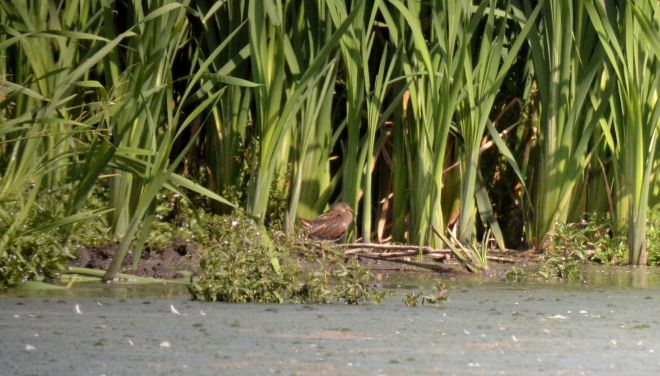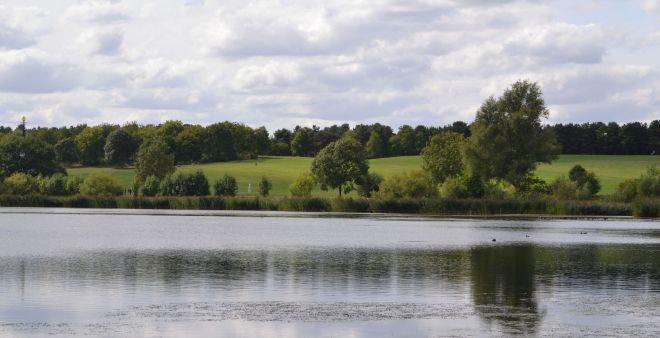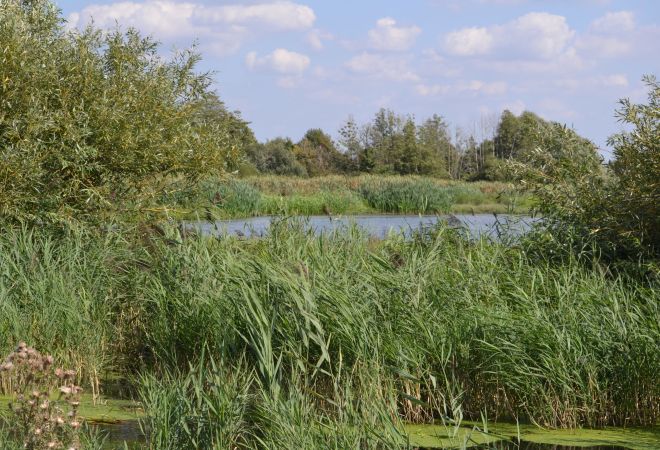August was a good month for Spotted Crake in England, with birds being reported on RBA from 10 different locations. In the last week two of those have been within easy reach and so I opted to take a look and hopefully update my personal experience of what is an easily overlooked, even enigmatic species. At this time of year immature birds often stop on migration to moult, sometimes rendering them flightless for up to three weeks
This secretive aquatic bird breeds locally in bogs and wet meadows across much of Europe and into western Asia, but is rare in Britain other than in northern Scotland. Further south most sightings occur on passage in marsh vegetation but Crakes are at all times difficult to view well. My only past sighting I can recall clearly was at Titchwell Marsh, Norfolk in August 1997. Then as now I also saw one two days previously at Dinton Pastures, Berks; and an even older record was in Holland in August 1988. So the presence of two Spotted Crake this week around 40 miles from home was a good opportunity to bring a little encountered scarcity into the present.

Spotted Crake at Eton Wick
Last Thursday (30th) I opted for what seemed the more difficult of the two Crakes at Willen Lakes in Milton Keynes. There are two landscaped former gravel pits in this large public park, and I had visited the southern one before in November 2016 (see here) to see Velvet Scoter. This time my quest was being reported from the reed fringed side of the northern lake, close to the park’s Peace Pagoda and maze.
Arriving late morning in the Pavilion car park (SP 87658 41075) I first reconnoitred to find the area in question could be viewed from the opposite side of the lake where there were a number of gaps in the waterside vegetation. Then I retrieved my optics, chair and sandwiches before secreting myself in one of these spots away from any anxious enquiry of passing parents. Before me was a very open location (pictured below) and any views of the bird were going to be distant.

The Crake habitat at Willen Lake (N), Milton Keynes
In shallows at one point on the opposite shore there were several Green or Common Sandpiper, as well as a few Lapwing and Moorhen; the last of which would provide a good size reference for the other bird I sought. Spotted Crake is about 10cm shorter in length than a Moorhen, and a little smaller than Water Rail that it resembles in shape and habits. After a while I picked out a small brown form and this indeed was the Spotted Crake.
A very pleasing hour then passed in which this bird went through a full repertoire of Crake behaviour, alternately foraging busily in the open, moving through the reed edge, dashing back into cover on becoming alarmed, then reappearing from close by. Though always distant I could clearly discern it’s blue-ish head; short, straight bill and upheld tail with striking buff under-tail feathers. I was at all times struck by how small this bird seemed compared to the other species around it. The encounter was indeed an education in all things Spotted Crake.
Yesterday I went for the second bird at Dorney Common by Eton Wick, in company with fellow Oxon birder Sally who had not seen one before. There were a couple of pager reports while we began our day walking Oxford’s Farmoor Reservoir with other birding colleagues, suggesting the Berks’ Crake was receiving a little attention. Then upon our arrival on site we enquired of a departing birder who pointed out a group of observers in the common’s north-east corner.

The second Crake location at Eton Wick
This was the same place (SU 94289 78986) where I had seen my second Pectoral Sandpiper in September 2012, though the habitat was now rather different with deeper water. The Spotted Crake was active in the paler green area between the two taller, darker areas of reeds on the far shore in the above picture. It would emerge from either end of the brighter vegetation, presumably spending most of it’s time concealed further back in the space in between.
Once again we came equipped with chairs and sandwiches. After a while the other birders all left and we continued to watch the Crake intermittently for an hour or more. I then realised there was another gap in the Willow fringe a little to our left, probably the viewing location described rather vaguely on RBA, from where there was a better view of the right hand spot the bird favoured. So I set up my digiscoping kit trained onto this place, while Sally continued to watch the left hand spot. Either side of 3pm the Crake emerged again in both places and I acquired these blurry records (below).
This second and closer encounter was as pleasing as the earlier one, and so my experience of a difficult species has been duly updated. Despite their reputed elusiveness, these birds were fairly easy to observe once located and with patience. Soon both will move on to their African wintering grounds and I am very glad to have spent a little time in their presence as they disperse south.


